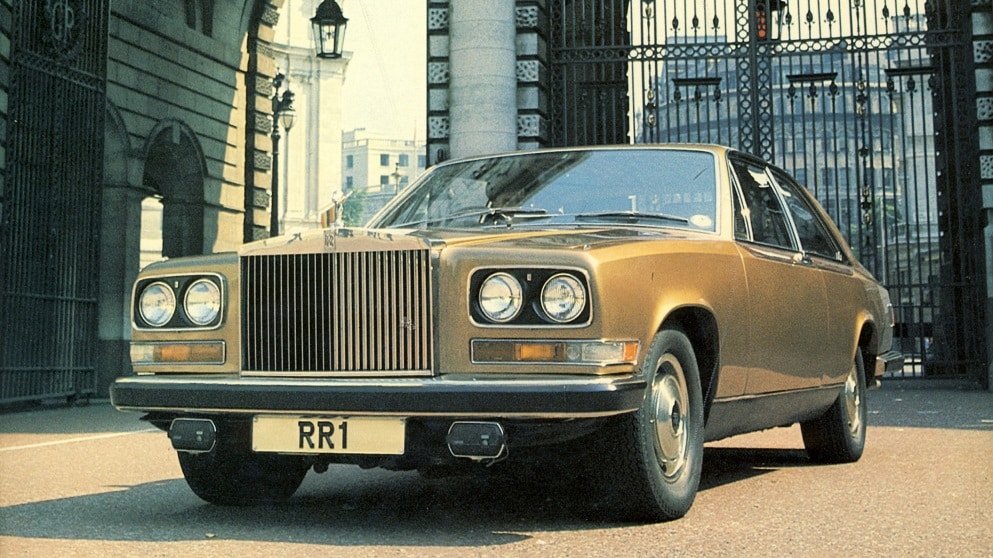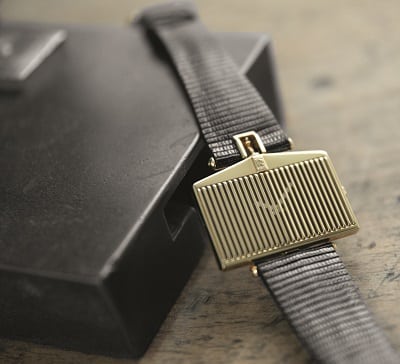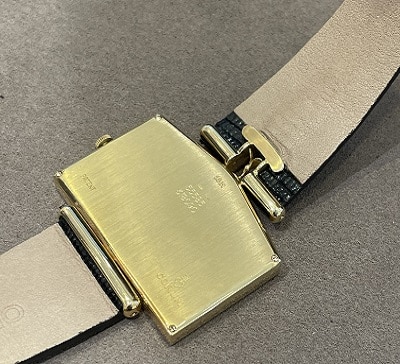The 1970s, in the luxury world, were a time of excess. Fashion looked to exaggerate the bohemian style of the late 1960s with flared trousers, wide collars, and excessively patterned coloured fabrics. At the other extreme, the Halston, Missoni and Diane von Furstenberg-clad crowds were part of the disco era of dance floors and glitter, with satin, off-the-shoulder dresses, jumpsuits, and lamé gowns as seen in the cocaine fuelled nightclubs such as Studio 54 in New York City.
In the same decade, Rolls-Royce Motors Limited was to emerge once again as the world’s premier luxury car marque. Having been overhauled as part of the financial crisis that affected Rolls-Royce Group in the 1960s, it was now re-founded as a manufacturer in its own right, with the car company separating after the receivership deal and starting to rebuild the brand.

Publicity image of the Rolls Royce Camargue at Admiralty Arch, London (c) Rolls-Royce Motors Ltd Car Division.
A new model, the Camargue, was presented to revamp the image of the most luxurious car brand in the market. It was the outcome of working with Italian design house Pininfarina and its chief designer Paolo Martin, a two-door coupé originally marked for its sister company Bentley, but switched to Rolls-Royce in an attempt to modernise the marque and place it at the forefront of both standards and aesthetics.
Rolls-Royce was also to start a series of co-branding deals in other areas as a way to promote the name. While such occurrences are commonplace in today’s drop-obsessed luxury market, 50 years ago it was a different thing. One of Rolls-Royce arrangements was with the Swiss company Montres CORUM Sàrl (Corum), who had already made a name for themselves with luxury watches made from other items, such as a small gold ingot or a gold dollar coin. In 1976, they cobranded with Rolls-Royce to produce a watch based on the design features of the famous car.
Although companies like Heuer and Rolex had been giving watches to celebrities of the motor world for a while, Corum’s arrangement with Rolls-Royce was the first one that really involved elements of the design of the car transferred to the timepiece. Presciently ahead of both the horology and automotive industries, the watch was to be shaped as the marque’s famous radiator grill, with the “Spirit of Ecstasy” statuette at the top. Corum’s own internal documents describe how they had created a “gem of a watch, adapting this outstanding shape to a new function”.


Front and back of an original Corum Rolls-Royce watch in 18kt yellow gold with black lizard leather strap.
The case, as an ultra-thin representation of the famous Rolls-Royce radiator grill, is a remarkable achievement. It was modelled more on the new Camargue’s radiator design – which had wider dimensions – than on the Silver Shadow’s. There are subtleties that make it a true craft rendition of the original form. As the Corum documents note, it is a “synthesis of both technical and aesthetic perfection”. Looking at the grill bars, they appear straight and slightly tilted in opposite directions, but they are also curved to “compensate for optical effect due to perspective”. The manufacture required patent-protected innovation to solder the radiator bars to the other parts of the case.
Beneath the grill, there was a thin sapphire crystal to protect the dial and hands. The movement in the watch was a “Corum ultra-thin calibre ultra-flat handmade skeleton calibre Frédéric Piguet”, where the hour and minute functions were adjustable via the crown bearing the Corum key symbol. Different versions were made with solid or sapphire crystal casebacks, crafted in 18kt white or yellow gold, fitted with either a black lizard leather strap or matching gold bracelet, and presented in a green leather case with a mahogany wood interior, that was similar to the cars.
Promotional photo of the Corum Rolls-Royce from 1976 with matching key chain and cufflinks, produced in the same metal and design than the watch.
The original presentation took place at Garrard Jewellers, London, in June 1976. Company records show that only a total of 143 in white gold and 120 in yellow gold were originally manufactured despite the relatively high demand. A few years later, another version of it was produced, this time with quartz or mechanical movements, also in white or yellow 18kt gold. From 1990, the watches were issued in a limited annual production run of 60 pieces a year.
The pioneering Corum Rolls-Royce co-branding agreement shows in the language that is still commonplace now, specifying that while the model had been “created with the approval of Rolls-Royce Motors Limited in England, this fact does not authorize us to use either the signet or the name Rolls-Royce”. All publicity texts had to be submitted ahead of time for legal approval. The name Rolls-Royce, the radiator grill, Spirit of Ecstasy, and badge were Rolls-Royce’s trademarks used by Corum with permission from 1976 until 1996.
Corum Rolls-Royce advert from 1976, showing the watch and the Spirit of Ecstacy statuette.
With nostalgia for the 1970s on an upward trend, there are interesting parallels between the pricing history of the car and the watch. A Rolls-Royce Camargue, fresh out of the production line, was approximately £30,000, which is equivalent to about £240,000 today. A second-hand version now costs around £50,000. When new, the Corum watch sold for £2,750 given vagaries in the exchange rate, which would be £21,800 today. On the second-hand market, the yellow gold version on a strap is about £9,200. Like the Rolls Royce Camargue, limited production numbers for the watch then, lead to higher demand and increasing prices now. What was once seen as a little too avant-garde, is now seen as progressive, rare, and desirable.
Words: Dr Andrew Hildreth














Show Comments +